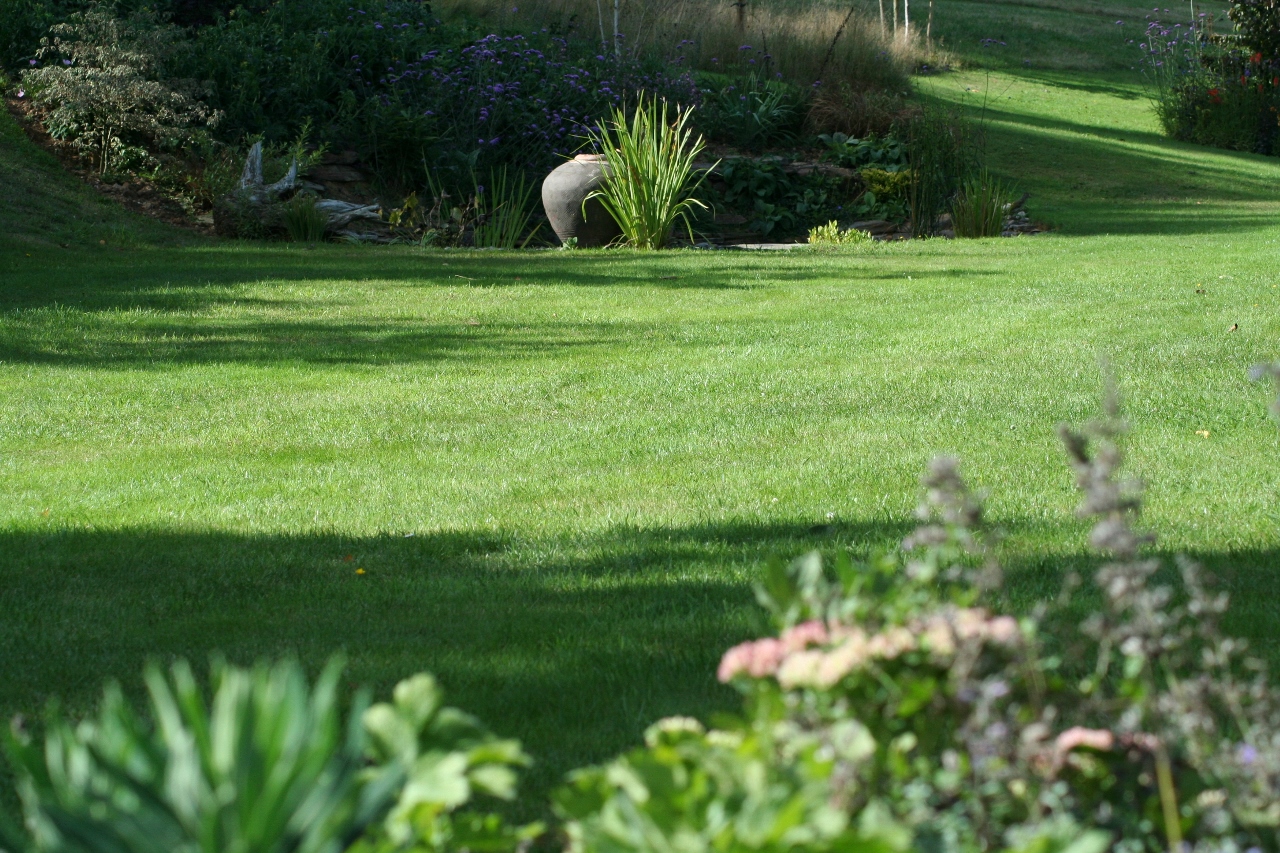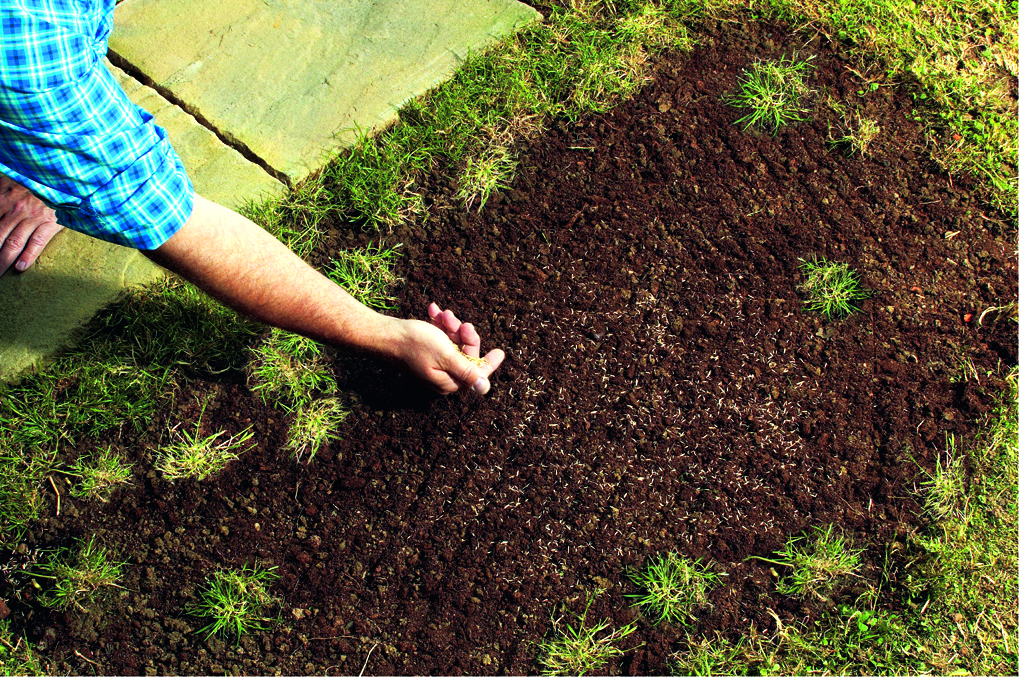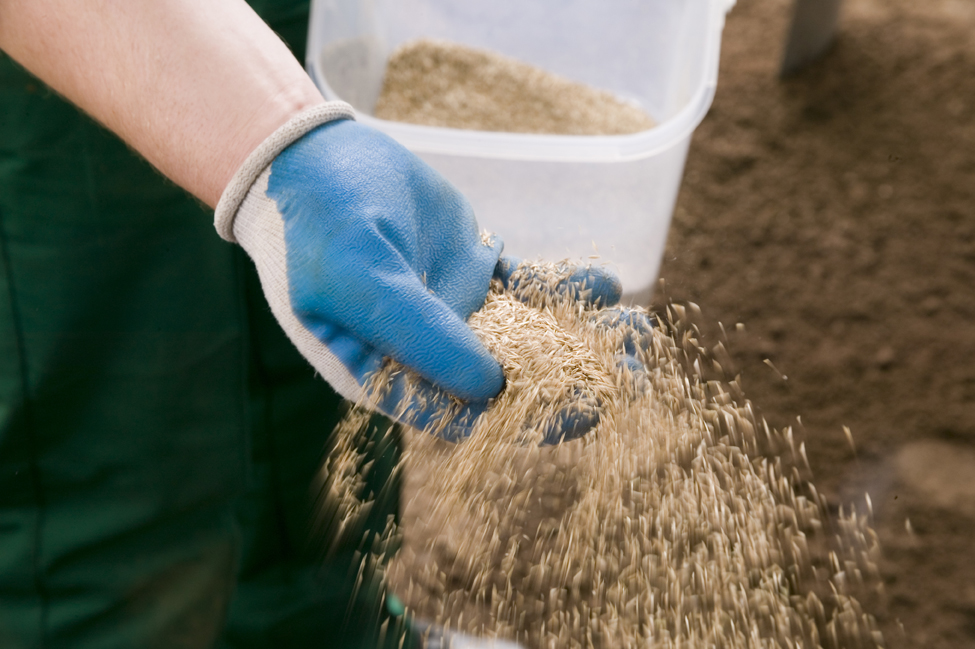Starting a New Lawn

An area of grass is a feature in most gardens and most gardeners start a lawn at some point, whether extending or changing the shape of an existing one, or starting the whole area from scratch. Perhaps you are levelling out dips and bumps? Or removing areas of grass that have failed? The principles are exactly the same. Whatever your motivation, you want to achieve the best possible results; failed attempts waste time and do nothing for the appearance of your garden in the coming year.
Good preparation is essential
Most lawn problems are a result of the condition of the ground beneath the turf. This is your opportunity to give your grass the best possible growing environment whether you are sowing seed or laying turf.
Clear the weeds
Firstly you must clear the site of weeds, especially perennial weeds such as bindweed and ground elder. This needs to be tackled well in advance. Treatment with weedkiller is the best solution; applied when the weeds are in full leaf several weeks before you are sowing or laying turf. If you have left it too late it may be best to tackle the weeds in autumn and delay the lawn until next spring.
 Cultivate
Cultivate
Thorough digging or cultivation with a rotovator is the next step. Compacted soil beneath the surface must be broken up to allow free drainage when the lawn is laid. The soil can be improved by the addition of organic matter when cultivating. 6X Concentrated Manure is ideal for this purpose and is lighter and easier to handle than bulky farmyard manure.
If there are low areas or depressions the soil can be topped up with topsoil. This is a particularly convenient way to fill in the depressions in an existing lawn before re-sowing.
Consider drainage
On heavy wet ground, or where water lies in winter grass will struggle. If the site for a new lawn is like this, now is the time to think about drainage; in particularly difficult situations it may be best to call in an expert. For smaller lawns it may be possible to raise the surface slightly and surround the lawn with a drainage channel filled with shingle. This allows water to drain away from the grass surface.
Create a level surface
Finally you need a nice level surface of fine soil on which to lay turf or sow seed. Rake, remove stones; do not hurry. Firm the ground by walking on a plank of wood laid across the surface. Move the plant gradually until the whole site is firmed, then rake again. Now add a base fertiliser. Traditionally Growmore is used; a couple of handfuls to each square metre. Growmore adds all three main plant nutrients in equal proportions in a fast release formulation.
For best results use Vitax Q4 powder, rather than Growmore. This is a slow release, organic-based general fertiliser with trace elements. Using it ensures that your grass will have all the nutrients it needs for strong growth and perfect root development.
Once the fertiliser is lightly raked into the surface it will be time to plant in a few days. Ideally apply the fertiliser about a week before you sow,

Seed or Turf?
Obviously turf results in an instant green garden carpet. It is more expensive and quite hard work to lay, but you do not have to wait. Seed takes a few weeks, however it is easier, far cheaper and offers more flexibility in choice of the right seed for the type of lawn you want.
If you are extending an existing area of lawn choose the mixture which is the closest match to what you have. Rake the existing grass alongside the newly sown area with a spring tine lawn rake and overs ow with some of the new seed to blend the areas.
Secrets of success
Always sow the quantity recommended on the packet. Sowing too quickly means the grass plants are overcrowded and in competition with one another. This results in problems later on.
Small areas can be sown by hand. Practice on a couple of sheets of newspaper before you sow on the ground to get the density right. If sowing larger areas it is worth borrowing or hiring a spreader.
After sowing you can lightly rake the seed into the surface or just water it with a fine sprayer or lawn sprinkler. This should be done regularly until the grass is established if rain does not fall.
A newly sown lawn can be cut as soon as the grass is thick enough to obscure most of the soil. Usually when the grass is 5cm (2ins) long.
The best times to sow grass seed are autumn and spring. However best results are often achieved in autumn when the soil is warm and the air is cool. Morning dew does wonders for germination.
Andy McIndoe for Vitax
Your login details have been used by another user or machine. Login details can only be used once at any one time so you have therefore automatically been logged out. Please contact your sites administrator if you believe this other user or machine has unauthorised access.














